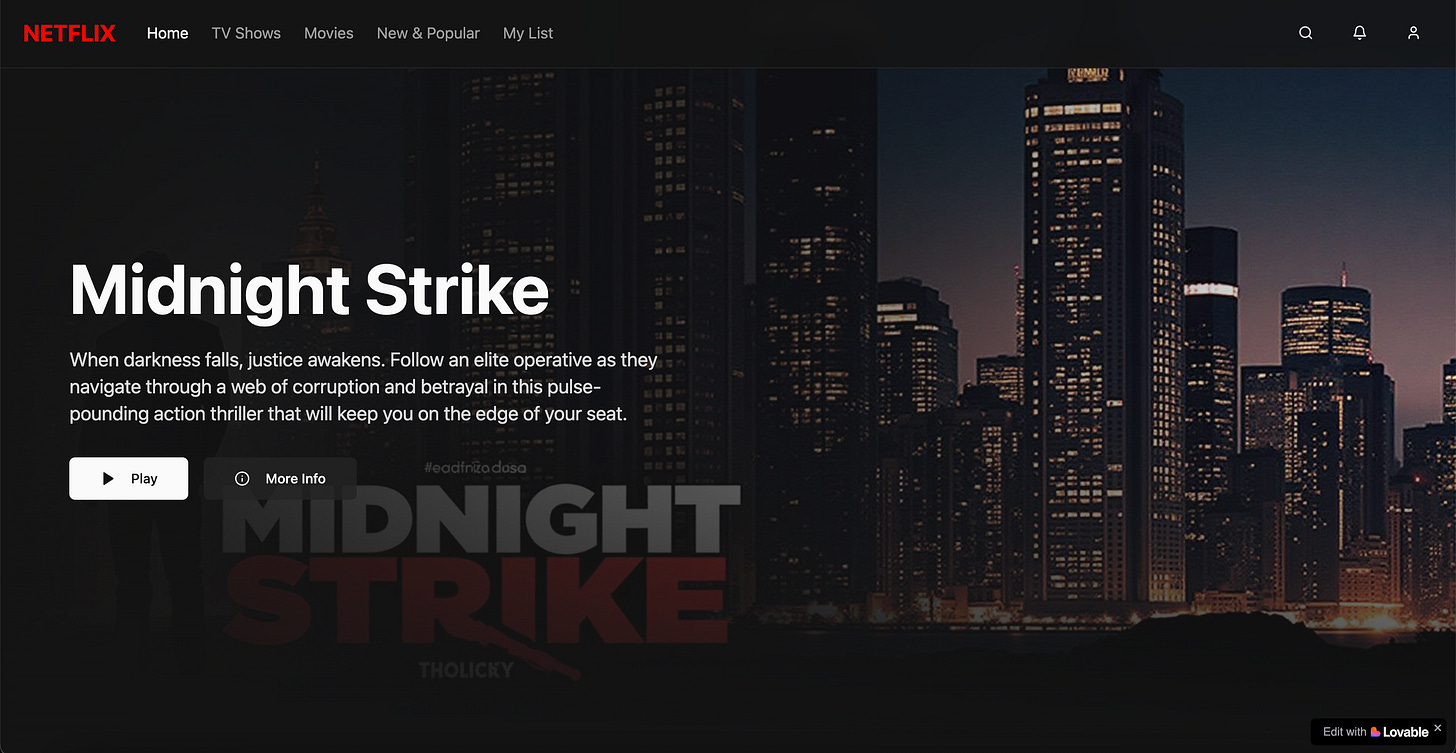Can you actually build a production-ready app with prompt-to-code tools like Lovable, Bolt, Replit…. and should you?
AI tools can spin up apps in hours, but are they truly production-ready? Here’s my opinion on what they’re good at, where they fail, and why the answer depends on your definition.
Every time I open Reddit, someone is showing off an app they “built over the weekend” using AI tools. Prompt-to-Code tools like Lovable, Bolt, Replit, and others are making it look like the days of sweating through lines of code are over. But are they?
Okay… Let me ask the big question.
Can you actually build a production-ready application with prompt-to-code tools like Lovable, Bolt, Replit?
The short answer: Yes.
Should you? Sometimes. It depends on your vibe level, risk tolerance, and what “production-ready” means to you.
Let’s talk.
What the hell is Prompt-to-Code?
They are tools that listen to your instructions (called a “prompt”) and build apps or websites for you.
So instead of writing all those complex lines of code, you just type something like:
“Build an app for people to challenge others to real-life mortal combat.”
And these tools do the rest.
What Does "Production-Ready" Mean To Me
Because the context of production-ready can be subjective, let me set the pace by defining what it means to me. For me, an app is production-ready when:
It can onboard 10,000 users without crying.
It can make $1M without falling apart.
It’s stable, not buggy.
It can scale and be maintained.
Basically: if it can’t handle growth, stress, and real money, it’s not production-ready.
Where Prompt-to-Code Tools Shine
Think of no-code like using Ikea furniture. If you need a desk quickly, Ikea can help. You don’t need to know carpentry or hire a carpenter; just follow the manual, and you'll have a desk by evening.
Prompt-to-code tools are perfect for:
Speed → You can actually get an MVP out in hours. For example, I once saw a dude on Twitter build a mini “Airbnb for local football pitches” using Lovable. In two months, he had 300 bookings. Good stuff, if you asked me.
Democratising building → Suddenly, a non-technical founder, a designer, or even a student can whip up an app without waiting for a dev team. That’s a game-changer.
Fun & Games → It’s exciting to type “Build me a marketplace app” and watch something appear on your screen. The other day, I told Lovable to build me a Netflix clone and watched it fight for its life to whip it out. It actually did build it; check it out here. And that’s not a bad result for a two-minute one-shot prompt task.
So, if all you want is to test whether people care about your idea or just play around, these tools are gold.
Where Prompt-to-code Tools Fail
But you wouldn’t use Ikea wood to build a bridge, or any furniture you plan to use for ten years.
Prompt-to-code tools are not the best because:
Scaling → An app that works for 50 users may not survive when 5,000 people hit it simultaneously.
Bugs and weird errors → The code these tools spit out sometimes works, sometimes doesn’t. Debugging it can be a nightmare, especially because you didn’t write it.
Maintenance → When the AI keeps generating new code, you may not even understand what’s under the hood, which is dangerous in the long run.
Complex systems → If your app needs deep backend logic, security layers, or compliance (like fintech or healthcare), AI tools alone might not cut it.
So yes, you can get something working fast, but keeping it alive long-term is another story.
So… Can You Build a Production-Ready App with These Tools?
It depends on what you call production-ready.
If your definition is “I want something live, working, and serving a few users quickly,” then yes, you probably can.
But if production-ready means “I want to build a million-dollar, scalable, bug-free product that can grow for years,” then these tools are just a starting point. You’ll still need real engineering, real processes, and probably a few sleepless nights.
My Take
I see prompt-to-code tools as something to play around with. They’re amazing when you consider how good the results are, with minimal effort. They’re also good for speed, prototyping, and reducing entry barriers. But if you’re aiming for the big leagues, serious money, stability, and scale, these tools won’t do all the heavy lifting for you, at least not yet.
So, should you use them? Absolutely. But treat them like Ikea furniture. They're great if you just need a functional desk, but you can’t build a bridge with them.
Disclaimer: The opinion in this article is valid as of August 31, 2025. These AI tools improve fast, I might be wrong tomorrow :)






